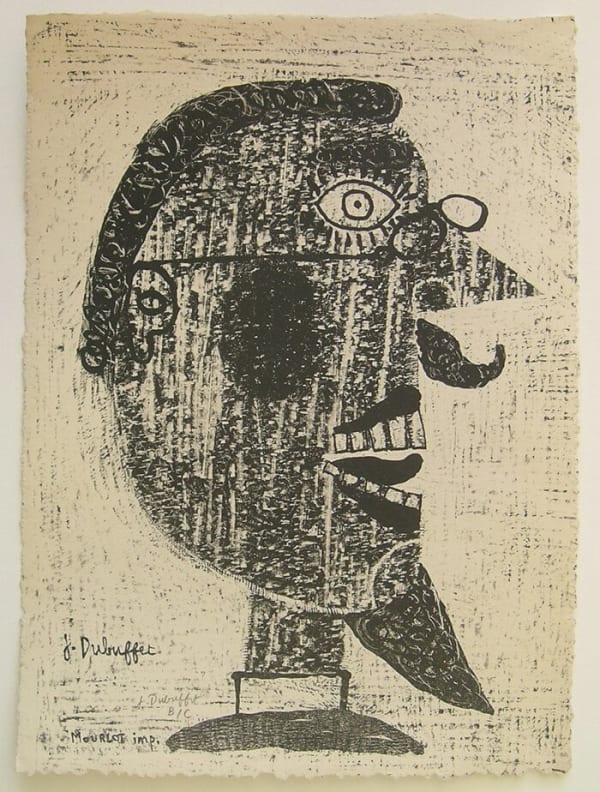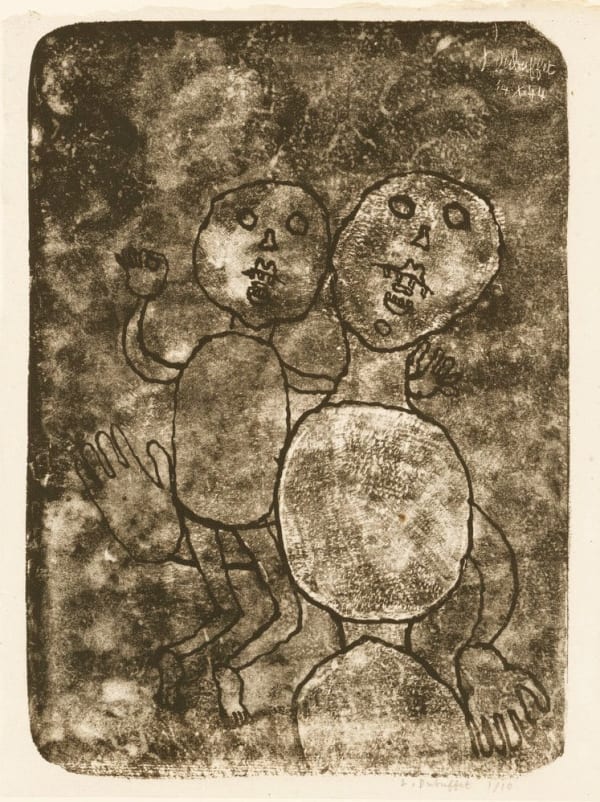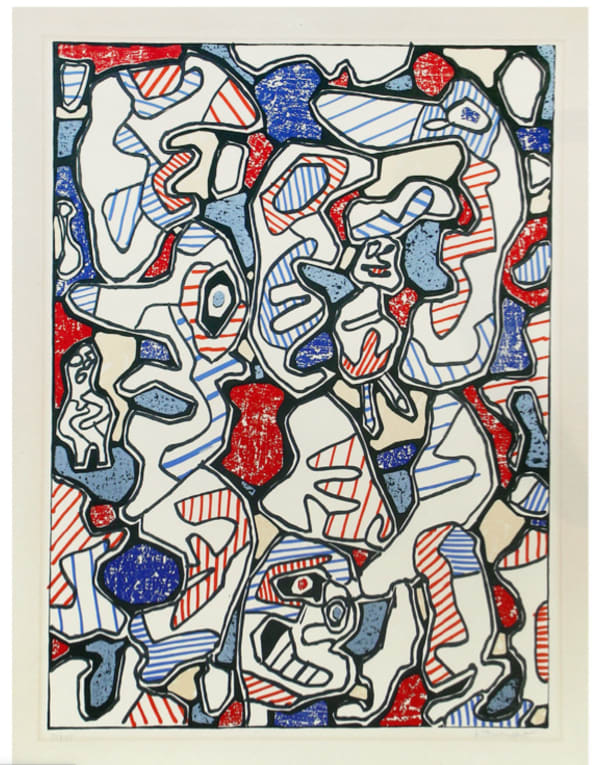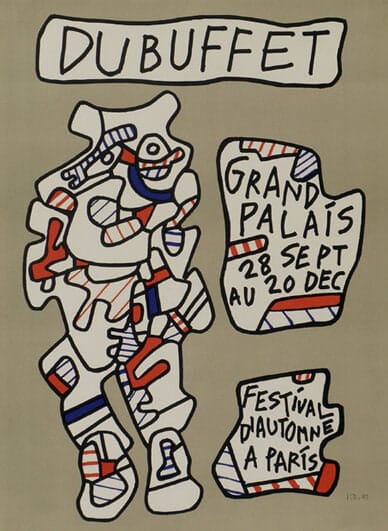Jean Dubuffet French, 1901-1985
Jean Dubuffet’s material experimentations, thickly built-up surfaces, and raw, expressionistic brushstrokes and helped expand the boundaries of painting in the 20th century. The artist coined the term “Art Brut” to define his mode of artmaking: He drew inspiration from the innocent, unrefined style of prisoners, children, and the institutionalized. Dubuffet’s practice also spanned drawing, printmaking, and sculpture, and he occasionally combined all his pursuits into multimedia pieces accompanied by live performances. Materials such as cement, plaster, tar, and asphalt heightened the deliberate crudeness of his work. Dubuffet briefly studied traditional painting methods at the Académie Julian in Paris and only settled into his mature style years later.
His work has been exhibited in New York, London, Paris, Los Angeles, and Amsterdam and belongs in the collections of Moderna Museet, the Museum of Modern Art, the Centre Pompidou, the Stedelijk Museum, the Tate, the Metropolitan Museum of Art, and the National Gallery of Art in Washington, D.C. Dubuffet’s canvases have sold for up to eight figures on the secondary market (via Artsy).







